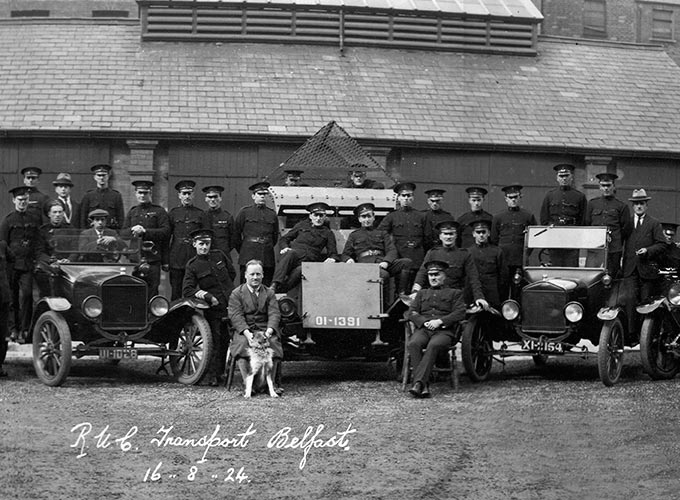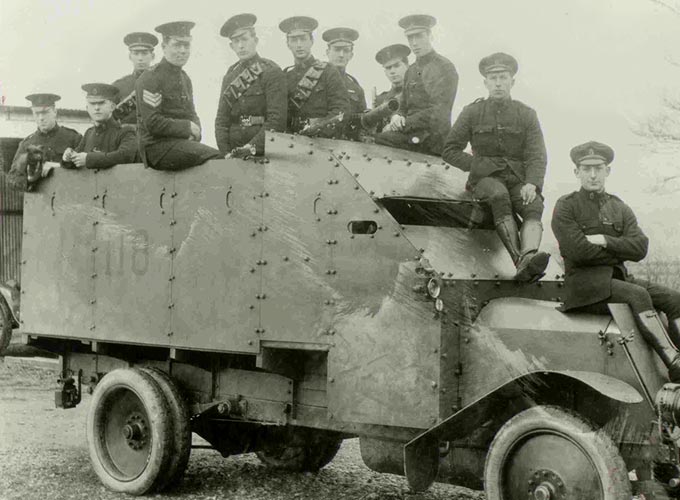Description
A photograph of the Royal Ulster Constabulary (RUC) transport division which shows (l-r) a Rolls-Royce armoured car, a Crossley tender, a Model T Ford, a Lancia cage car, a Model T Ford and a Dodge at the Musgrave Street Transport Depot in Belfast. After disbandment, the Royal Irish Constabulary’s (RIC) military vehicles were divided between the RUC and the Irish Free State Army.
The Rolls-Royce armoured car with heavy machine gun was first used by the Royal Naval Air Service during World War I. The vehicle was later adopted by the British army and deployed in Ireland to help combat the Irish Republican Army’s guerrilla-style attacks. After the signing of the Anglo-Irish Treaty the Irish Free State acquired 13 cars and the RUC bought six. The Rolls-Royce armoured car had a maximum speed of 45mph and consisted of a Silver Ghost chassis covered in armoured steel plating and a turret mounted with a Vickers .303 calibre machine gun. On border duty, the RUC draped a Union Flag on the bonnet of the car to distinguish it from Irish Free State Army’s armoured cars. The RUC continued to use Rolls-Royce armoured cars to patrol disturbed areas until 1948.
Originally used by the British army in Italy during World War I, the Lancia cage car was adopted by the RIC during the War of Independence to police disturbances and transport men. The Lancia had a maximum speed of 70 mph and was fitted with a steel box of armour which had loopholes for rifles. A metal plate protected the radiator from gunfire, and the cage prevented bricks, bottles and bombs being thrown into the vehicle. The RUC inherited 135 Lancias from the RIC and continued to use them to police civil disturbances in Belfast in the 1930s and during the IRA border campaign.



